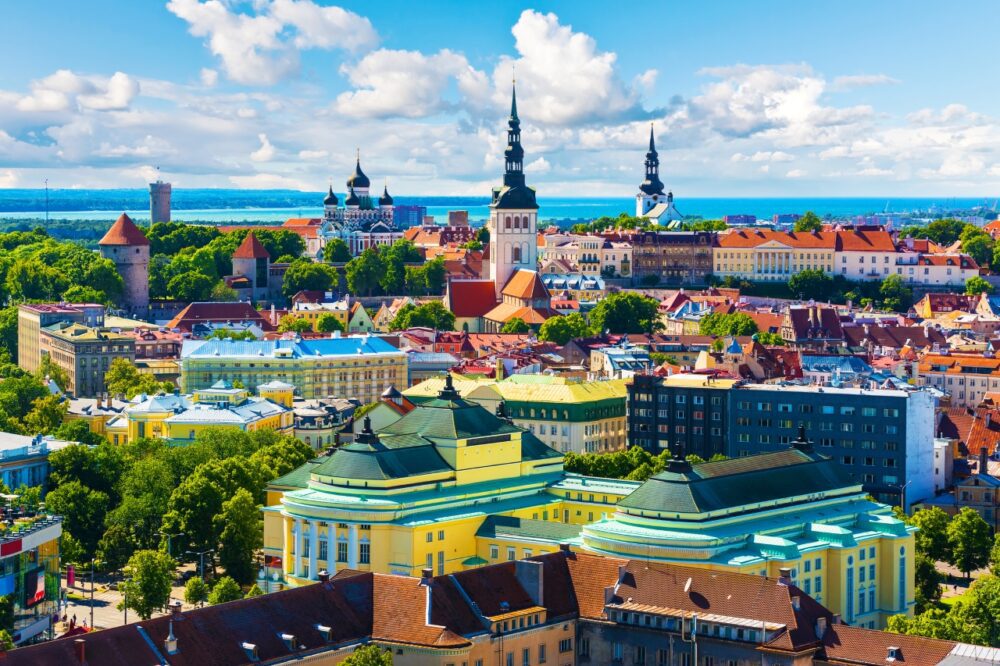
Is Tallinn worth visiting? Without question! The first time I visited Tallinn, I was enchanted by its fairy-tale charm. Walking through its medieval Old Town, with its cobblestone streets, pastel-coloured buildings, and towering spires, felt like stepping into another era. Add in the vibrant energy of its modern cultural scene, and Tallinn quickly became one of my favourite European cities.
As the capital of Estonia, Tallinn is a captivating blend of the old and the new. The city’s UNESCO-listed Old Town is one of the best-preserved medieval centres in Europe, while its Telliskivi Creative City showcases the innovation and creativity of modern Estonia. Whether you’re marvelling at Alexander Nevsky Cathedral, enjoying panoramic views from Toompea Hill, or sipping coffee in a trendy café, Tallinn has a way of leaving a lasting impression. But is Tallinn worth visiting for you?
In this blog post, we’ll explore the top 10 reasons why Tallinn should be on your travel list, from its rich history to its vibrant cultural scene. Plus, we’ll share insider travel tips to help you plan the perfect trip. Keep reading to discover why Tallinn is a must-visit destination for history buffs, foodies, and adventurers alike.
Table of Contents
Pros – Reasons You Should Visit Tallinn
1. A Fairytale-Like Old Town That Feels Frozen in Time
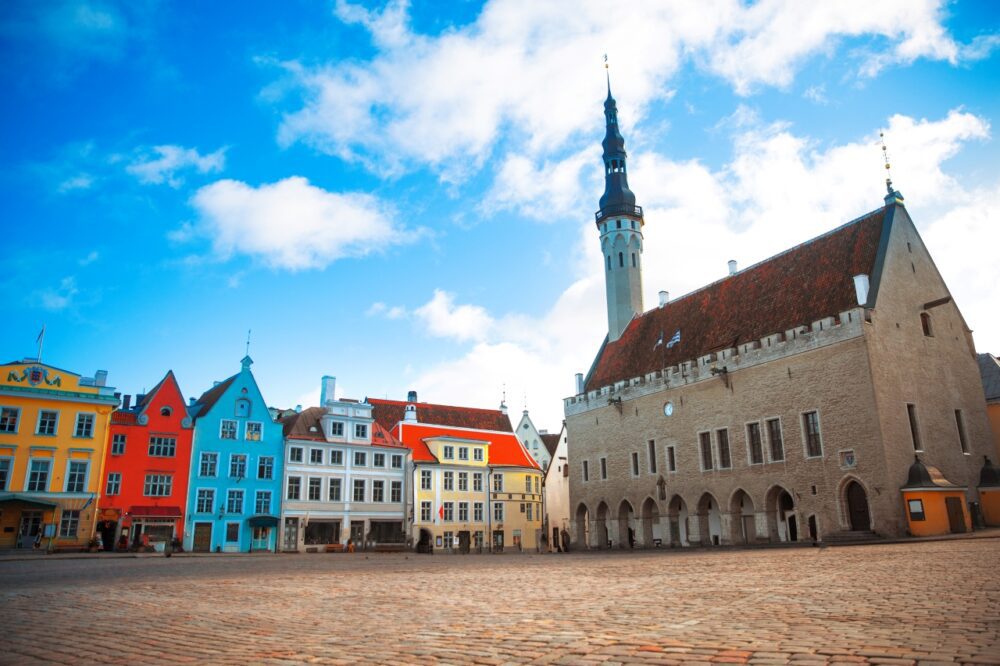
Tallinn’s Old Town is one of the best-preserved medieval city centers in Europe, with cobblestone streets, Gothic spires, and charming pastel-colored buildings. The entire area is a UNESCO World Heritage Site, and walking through it feels like stepping back in time. Unlike some historic districts that feel overly polished or commercialized, Tallinn’s Old Town retains an authentic charm, with medieval walls, hidden courtyards, and centuries-old merchant houses.
I spent hours wandering through the winding streets, discovering charming alleyways, ancient churches, and viewpoints offering breathtaking views over the red rooftops and the Baltic Sea. One of my favorite spots was Town Hall Square, where the 15th-century Town Hall stands as the centerpiece of the city. Whether you visit in summer when the streets are lively or in winter when the Christmas market transforms the square into a festive wonderland, Tallinn’s Old Town is a place that feels magical in every season.
2. A Perfect Blend of Medieval and Modern
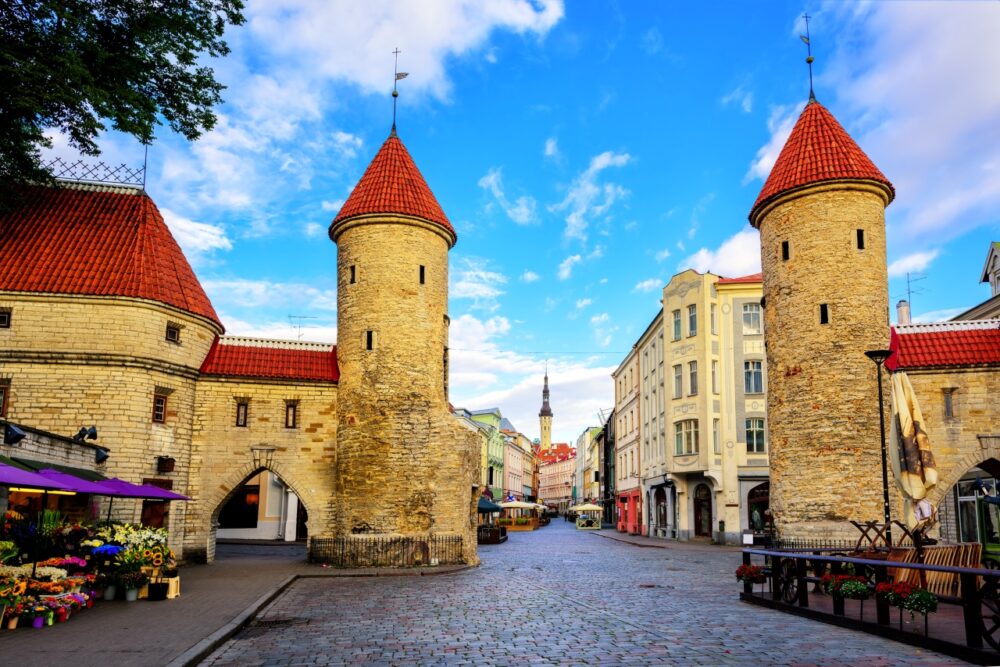
While Tallinn is known for its medieval charm, it also has a vibrant, modern side. The city is a leading tech hub, home to innovative startups and a thriving digital economy, yet it manages to balance this with its historical roots. This contrast is best seen in areas like Telliskivi Creative City, where former industrial spaces have been transformed into trendy cafés, co-working spaces, and art galleries.
I visited the Rotermann Quarter, a once-abandoned factory district that has been revitalized into a stylish area filled with modern glass buildings, boutique shops, and upscale restaurants. Just minutes away from the medieval Old Town, this part of Tallinn feels like stepping into the future. Few cities manage to blend the old and the new as seamlessly as Tallinn, making it a fascinating place to explore.
3. Stunning Panoramic Views from the City’s Many Lookout Points
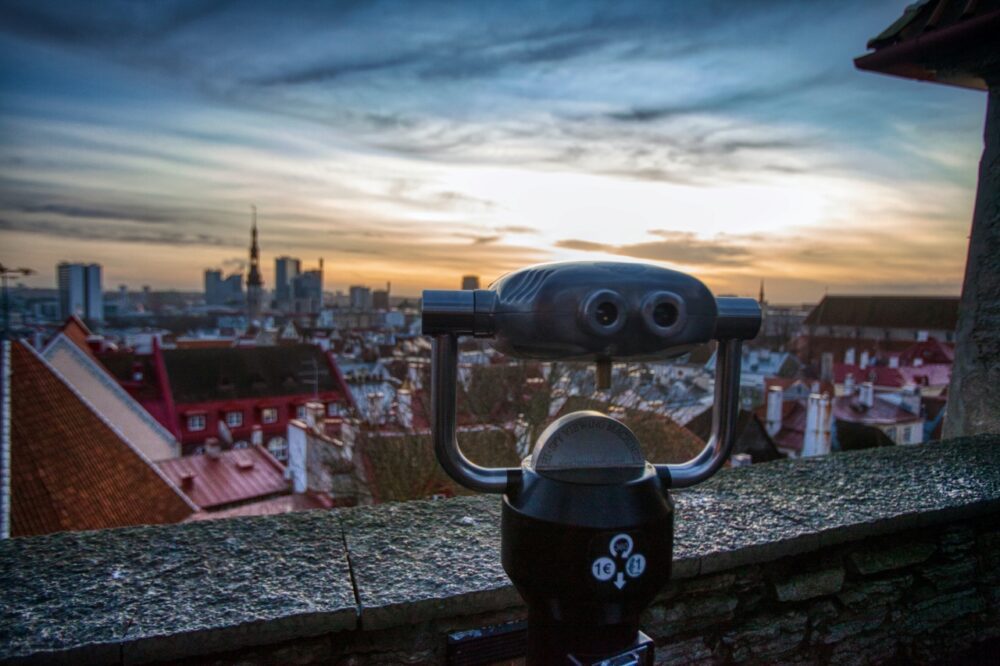
Tallinn’s hilly landscape means that there are plenty of fantastic viewpoints offering breathtaking panoramas of the city and the surrounding Baltic coastline. The best views can be found in Toompea, the upper part of the Old Town, where several viewing platforms provide stunning perspectives of the red rooftops, church spires, and the sea beyond.
I climbed to the Kohtuotsa Viewing Platform, and the sight of the city stretching out below me was unforgettable. Watching the sun set over the medieval skyline while enjoying a coffee from a nearby café was one of my favorite moments in Tallinn. Whether you prefer sunrise, sunset, or a daytime visit, these viewpoints provide some of the most picture-perfect scenes in Estonia.
4. A Fascinating Soviet-Era History
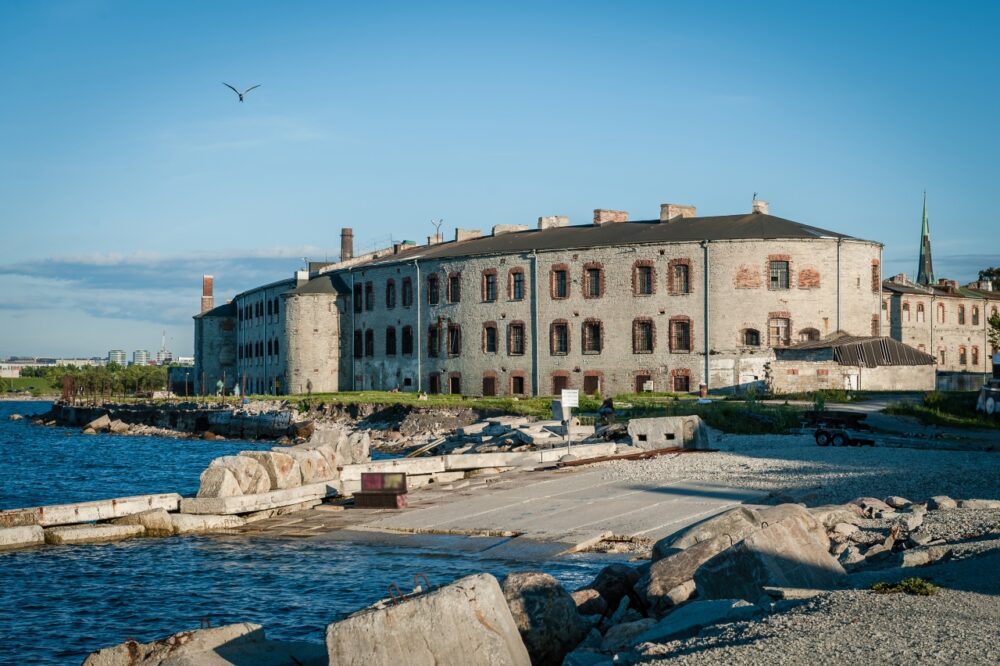
Estonia’s past under Soviet rule has left behind a unique and often haunting historical legacy. While Tallinn is proudly independent and forward-looking today, remnants of its Soviet past can still be explored, offering an eye-opening contrast to the medieval and modern parts of the city.
I visited the Patarei Prison, a crumbling but atmospheric former Soviet prison by the sea, which provides a chilling insight into the hardships faced by political prisoners. Another must-see is the KGB Museum, located in the Hotel Viru, where visitors can learn about the extensive surveillance operations carried out by Soviet intelligence. Tallinn is one of the best places to learn about Estonia’s turbulent 20th-century history, and these sites offer a sobering but important perspective.
5. A Food Scene That Mixes Nordic, Russian, and Baltic Influences
Tallinn’s food scene is an exciting mix of traditional Estonian cuisine, Russian influences, and modern Nordic flavors. Local dishes often feature fresh, seasonal ingredients, with a focus on wild mushrooms, smoked fish, root vegetables, and game meats. While Estonian food may not be as internationally famous as French or Italian cuisine, it’s full of hearty and unique flavors that are worth trying.
I had an incredible meal at a traditional Estonian restaurant, where I tried elk stew, dark rye bread, and a refreshing sea buckthorn dessert. For a more casual bite, the city’s cafés serve delicious cinnamon rolls and pastries, perfect for a mid-day break. If you’re looking for something different, Tallinn’s food markets, such as Balti Jaama Turg, offer everything from local cheeses to handmade dumplings, providing a great way to sample authentic flavors.
6. A Café Culture That Rivals the Best in Europe
Estonians take their coffee seriously, and Tallinn has a thriving café culture that ranges from historic teahouses to trendy third-wave coffee spots. Whether you prefer cozy cafés with antique interiors or modern espresso bars, the city has plenty of options for coffee lovers.
I stopped by Maiasmokk, the oldest café in Estonia, where I enjoyed a traditional marzipan treat alongside my coffee in an elegant, old-world setting. Later, I visited a minimalist coffee shop in Telliskivi, where baristas were carefully crafting pour-over brews with single-origin beans. No matter where you go in Tallinn, you’re never far from a great cup of coffee, making it a fantastic city for slow mornings and relaxed afternoons.
7. The Baltic Sea Adds a Beautiful Coastal Element to the City
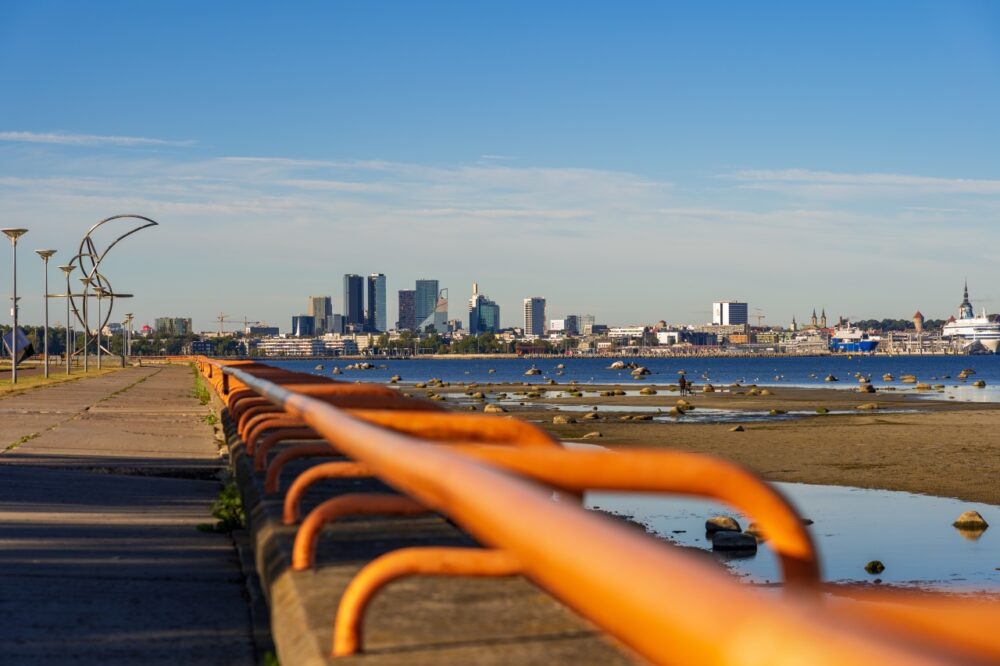
Although Tallinn is best known for its medieval architecture, it also has a gorgeous coastal side. The city is located right on the Baltic Sea, offering scenic seaside promenades, sandy beaches, and beautiful waterfront parks.
I took a walk along the Pirita Promenade, a peaceful coastal path that offers stunning views of the sea and Tallinn’s skyline in the distance. On a sunny day, locals were out cycling, jogging, and even sunbathing on the small but inviting beaches. If you want a break from sightseeing, a trip to the waterfront provides a refreshing change of pace.
8. A Compact and Walkable City That’s Easy to Explore
Tallinn’s size makes it one of the easiest European capitals to explore on foot. The Old Town is entirely walkable, with all major attractions just a short distance from each other, while other interesting districts like Telliskivi and Kadriorg are within easy reach.
I barely needed public transport during my stay, as everything was within a comfortable walking distance. Even in winter, the city’s pedestrian-friendly streets made it enjoyable to explore without the stress of navigating a complicated metro or bus system. If you love cities where you can wander freely without relying on taxis or long transit rides, Tallinn is perfect.
9. A Thriving Art and Design Scene
Tallinn has a growing reputation as a creative hub, with independent artists, designers, and craftspeople bringing new life to the city’s cultural scene. The Telliskivi Creative City is a prime example, home to art studios, design boutiques, and vibrant street art murals.
I visited the Estonian Design House, a shop featuring beautifully crafted local goods, from handmade ceramics to stylish Nordic-inspired clothing. The mix of contemporary art, traditional craftsmanship, and cutting-edge design makes Tallinn an exciting destination for art lovers and those looking for unique souvenirs.
10. One of the Best Christmas Markets in Europe

If you visit Tallinn in winter, you’ll experience one of the most magical Christmas markets in Europe. The Town Hall Square transforms into a festive wonderland, with wooden stalls selling handcrafted gifts, mulled wine, and traditional Estonian holiday treats. The combination of snow-covered medieval buildings, twinkling lights, and the scent of spiced gingerbread makes it feel like something straight out of a storybook.
I visited in December, and the experience was nothing short of magical. The cold air was filled with festive music, the market stalls glowed under the soft light of lanterns, and the entire city felt like a Christmas card come to life. For anyone who loves winter travel, Tallinn’s Christmas market is one of the best in the world.
Cons – Things You Should Consider When Visiting Tallinn
1. The Winters Are Long, Dark, and Extremely Cold
Tallinn is a beautiful city in every season, but winters can be harsh, with freezing temperatures, short daylight hours, and heavy snowfall. From late November to early March, the sun sets early, sometimes as early as 3:30 PM, making the days feel incredibly short. The cold can also be quite extreme, especially with the wind blowing in from the Baltic Sea, creating a chill that makes walking around less enjoyable.
I visited in January and quickly realized that while Tallinn looks magical under a blanket of snow, the cold was intense. Even with thermal layers, a scarf, and gloves, I found myself ducking into cafés every hour just to warm up. The icy streets also made walking a bit tricky, especially in hilly areas like Toompea. While the Christmas market and cozy indoor attractions make winter visits special, those who dislike cold weather may find Tallinn’s winters difficult to handle.
2. Prices Are Higher Than in Other Eastern European Cities
Estonia is often grouped with other Eastern European countries when people talk about affordable travel, but Tallinn is noticeably more expensive than many of its neighbors. Accommodation, dining, and attractions are often priced closer to what you’d expect in Scandinavian countries rather than in places like Poland or Hungary. While it’s still more affordable than cities like Stockholm or Helsinki, visitors expecting rock-bottom prices might be surprised.
I found that while budget-friendly options do exist, eating out at mid-range restaurants or staying in hotels in the Old Town quickly added up. A simple lunch at a casual restaurant cost more than I had paid in Latvia or Lithuania, and accommodation in peak season was not much cheaper than in some Western European cities. If you’re traveling on a tight budget, Tallinn requires a bit more financial planning compared to other cities in the region.
3. The Old Town Can Feel Overcrowded, Especially in Summer
Tallinn’s Old Town is its main attraction, but it’s also relatively small, which means that during peak tourist seasons—especially in summer and on weekends when cruise ships arrive—the narrow streets can become packed with visitors. The main squares and lookout points can feel especially crowded, making it harder to enjoy the medieval charm of the city at a relaxed pace.
I visited in July and was surprised by how congested some areas became in the afternoons. The main streets were filled with large tour groups, and finding a quiet spot to take in the views or grab a coffee without waiting in line became a challenge. The best way to avoid the crowds is to explore early in the morning or later in the evening when the day-trippers have left, but for those who dislike packed tourist areas, visiting outside of peak season is a much better option.
4. Some Attractions and Restaurants Cater Too Much to Tourists
While Tallinn has plenty of authentic spots, parts of the Old Town feel overly geared toward tourists, with souvenir shops, themed restaurants, and medieval-style experiences that don’t always feel entirely genuine. Some of the restaurants, especially those in Town Hall Square, have inflated prices and focus more on attracting visitors rather than offering great food or service.
I made the mistake of dining at a restaurant with a prime location in the main square, only to find that the prices were high, the service was slow, and the food was mediocre. While it’s tempting to sit at one of the outdoor cafés in the most scenic areas, venturing just a few streets away leads to much better, more reasonably priced options. Doing a bit of research before choosing a place to eat can make a big difference in Tallinn.
5. The City Feels Very Quiet at Night, Especially on Weekdays
While Tallinn has a fun and lively bar scene, especially in districts like Telliskivi, the nightlife can feel surprisingly quiet, particularly outside of weekends. Many restaurants and bars close relatively early, and if you’re looking for a buzzing late-night atmosphere, you might not find it unless you visit during a festival or a major event.
I went out on a Wednesday evening expecting to find a lively atmosphere, but aside from a few bars, the city felt much quieter than I had anticipated. Even in some of the more well-known nightlife spots, the crowds were small, and some places shut down before midnight. While this is great for travelers looking for a relaxed evening, those expecting a 24/7 party scene might be disappointed. If nightlife is important to you, planning a visit around the weekend is the best option.
When to Visit Tallinn
The best times to visit Tallinn are late spring (May to June) and early autumn (September), when the weather is mild, and the city’s medieval Old Town is vibrant with flowers or autumn colours. These shoulder seasons offer pleasant temperatures and a more relaxed pace compared to the peak summer months. Summer (July and August) is Tallinn’s busiest time, with warm weather, outdoor festivals, and lively street cafes, though prices can be higher and popular spots crowded. Winter is magical for those drawn to festive charm, as Tallinn’s Christmas market in the Town Hall Square transforms the city into a winter wonderland, but be prepared for chilly temperatures.
How to Get to Tallinn
Tallinn Airport (TLL), located just 5 kilometres from the city centre, is Estonia’s main airport, with direct flights from Finnair, Lufthansa, AirBaltic, and Ryanair connecting it to key European cities. From the airport, you can take the convenient tram line 4, which takes around 15 minutes to reach the city centre, or opt for a taxi or ride-hailing service for a quicker journey. Tallinn is also well connected by ferry to Helsinki and Stockholm, making it easy to combine visits to these cities. For those travelling by bus, there are regular international services from Riga and St. Petersburg.
Where to Stay in Tallinn
Tallinn has a variety of neighbourhoods offering something for every traveller:
- Luxury: Old Town – Staying within the medieval city walls offers an atmospheric experience close to landmarks like St. Olaf’s Church and Toompea Castle. For luxury, consider Hotel Telegraaf or Schlössle Hotel, both blending historic charm with modern comforts.
- Mid-range: Rotermanni Quarter – A modern, stylish area just outside the Old Town with great cafes and shops. Hotel L’Ermitage and Hestia Hotel Europa provide comfort and convenience within walking distance of the main attractions.
- Budget: Kalamaja – A hip, bohemian neighbourhood known for its wooden houses and art scene, just a short walk or tram ride from the Old Town. Options like 16eur Hostel and Bob W. Telliskivi Studios offer affordable stays with character.
Getting Around Tallinn
Tallinn’s compact city centre is best explored on foot, especially the Old Town, where nearly every corner reveals a historic gem. For longer trips, the Tallinn public transport system (trams, buses, and trolleybuses) is efficient and budget-friendly, with single tickets and day passes available for purchase. Tallinn also has a bike-sharing scheme, City Bike, allowing visitors to explore at their own pace and cycle along scenic coastal routes or through the trendy Kalamaja district. A Tallinn Card offers good value, covering unlimited public transport and entry to many of the city’s top attractions.
How Long to Spend in Tallinn
Two to three days is ideal for Tallinn, giving you time to explore the Old Town, visit Toompea Hill for panoramic views, and delve into Estonian history at the Kumu Art Museum or Seaplane Harbour Museum. With an extra day, you can explore the creative Kalamaja district or take a relaxing stroll along the Pirita Promenade to the beach. If you’re drawn to Tallinn’s natural surroundings, consider adding a day trip to Lahemaa National Park, a beautiful area of forests, waterfalls, and traditional fishing villages just an hour’s drive away.
Conclusion
So, is Tallinn worth visiting? Absolutely! With its beautifully preserved Old Town, innovative modern districts, and a unique blend of history and culture, Tallinn offers an experience that’s both inspiring and memorable. Highlights like the medieval walls, Telliskivi Creative City, and the welcoming vibe of the locals make it a top destination in Estonia. While the weather can be chilly in the off-season, the city’s charm and warm hospitality more than make up for it. If you’re ready to explore one of Europe’s hidden gems, start planning your trip to Tallinn today!
